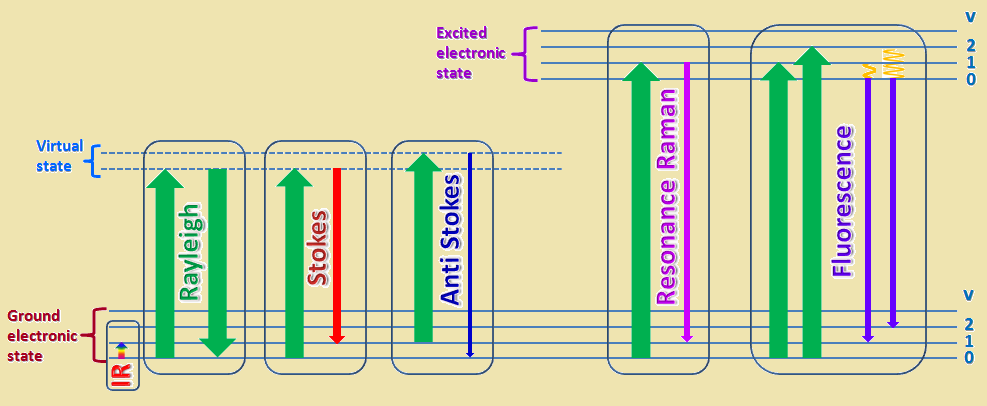|
Raman Spectroscopy
Raman spectroscopy
is based on the phenomenon of inelastic scattering of light, first
observed by C.V. Raman in 1928. It involves illuminating a sample
with intense monochromatic laser light and analyzing the resulting
Raman (inelastically) scattered photons. Such photons carry
information about the identity of the material and its physical and
chemical state. In Raman spectroscopy, the difference between the
wavelengths of the incident and scattered radiation is measured.

Raman spectroscopy
is used in a wide variety of research fields, with in applications
in physics, chemistry, biology, pharmacology geology, forensics,
materials science, etc.
Our Renishaw inVia
Reflex Raman spectrometer allows specialized applications
like: Raman imaging, polarized Raman, resonant Raman, low-frequency
Raman, photo-luminescence, simultaneous Raman/AFM imaging.
Interested readers could find useful the
following web-pages:
Renishaw
Horiba
Nanophoton
BWTEK
Wikipedia
or videos:
The Raman effect - from BWTEK
What is Raman spectroscopy - from BWTEK
|